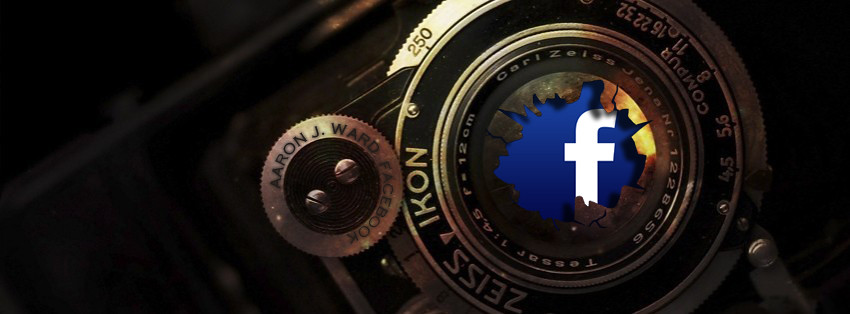
Fortunately, Facebook gives you a couple ways to find this out:įacebook’s Audience Insights tool allows you to deep dive into the demographics, page likes, location, and Facebook activity of people who follow your page, are based in your area, or are interested in brands like yours. Of course, if you’re going to represent and speak to your audience through your cover photo, you first need to understand who they are. That’s why so many of the best Facebook cover photos feature images of people. Keep Your Audience Front of MindĪs humans, we find it easier to connect with people than abstract concepts or inanimate objects.
#Fb cover photo privacy plus
In one cover image, Adidas encapsulates men’s and women’s sportswear, plus streetwear.

This works really well, allowing the brand to speak to three different markets at the same time. It’s pretty tricky to encapsulate such a huge brand in one picture, so Adidas has chosen to combine three separate images for its Facebook cover photo. If it doesn’t complement your brand, you risk confusing your audience.Īdidas is a huge brand that sells everything from skateboarding sneakers to golf attire. Complement Your Brand Through a Facebook Cover PhotoĬan you sum up your entire brand in a single image? It’s not as simple as it sounds! But that’s exactly what you need to do with your Facebook cover photo. The use of color is super effective, naturally drawing your eyes to the center of the image. While the tech giant famously doesn’t really “do” social, its branding on Facebook is still spot on.Īpple’s Facebook cover photo is an exercise in simplicity: no words, just one clean and instantly recognizable product image showcasing its iconic MacBook. Focus on communicating a single message as clearly as possible, so your audience is in no doubt of what you’re trying to say.Īpple does this better than most. When it comes to creating an impactful Facebook cover photo, simplicity is your friend. With all that space to play with, and no limit on the amount of text you can include, it’s tempting to cram in as much information as possible. Keep Your Facebook Cover Photo Simpleįacebook used to say only 20 percent of your cover photo could be made up of text, but it dropped that rule in 2013. Here are five key considerations to creating a cover photo that draws your audience in. It’s reasonable to say Facebook considers it pretty important! You’ve got a whole lot of digital real estate to play with, so you definitely want to make it count.ĭesigning a Facebook cover photo for your business page is much more than just choosing an eye-catching picture, cropping it to the right dimensions, and publishing it. Well, given that your Facebook cover photo takes up almost half the page on desktop …
#Fb cover photo privacy movie
Steps to Create an Effective Facebook Cover PhotoĮver heard of Hitchcock’s rule? Named for the legendary movie director, it states that the size of an object on-screen should be proportional to its impact on the story at that specific moment.
#Fb cover photo privacy how to
Read on to learn how to make a Facebook cover photo that shows off your brand in the best possible light. What’s the first thing they’ll see? Your Facebook cover photo.

Your current and prospective customers or subscribers will visit it to check you out, see what you’re talking about, and engage with your content. The starting point for all of those things is your Facebook Business Page. You should be using it to promote your products, advertise your brand, and generally represent your company. It might not be your audience’s favorite social platform, but they’ll almost certainly be on there, which means you need to be, too. Simply put, if you’re a brand, you can’t afford to ignore Facebook. With approximately 2.5 billion monthly active users, Facebook is comfortably bigger than Twitter, Snapchat, Reddit, and Instagram combined. In reality, Facebook has barely seen a slowdown in audience growth at any point in the last 12 years. Thing is, that’s just not supported by the user data. You may hear that it’s only for “old people,” that it’s not relevant, that brands are abandoning it. It seems like every week there’s a new article about how people don’t use Facebook anymore.


 0 kommentar(er)
0 kommentar(er)
